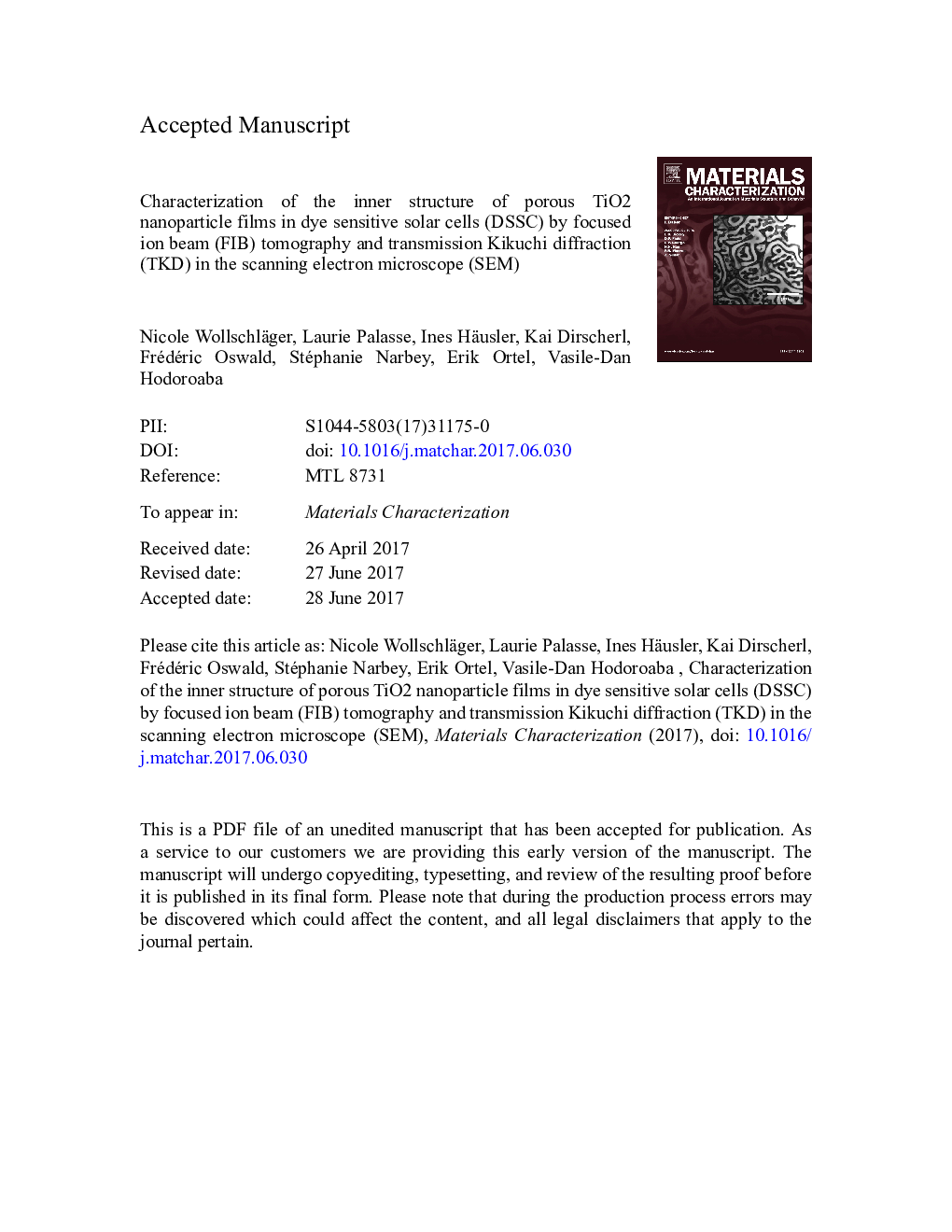| Article ID | Journal | Published Year | Pages | File Type |
|---|---|---|---|---|
| 5454567 | Materials Characterization | 2017 | 35 Pages |
Abstract
A combined methodical approach is tested for the first time with respect to the characterization of the inner structure of porous TiO2 layers infiltrated with ruthenium molecular sensitizer as typically used in modern dye sensitized solar cells (DSSC). Their performance is directly linked to the surface area 'offered' by the pore network to the dye. The micrometer thick layer employed was manufactured by screen-printing of a starting TiO2 powder constituted of shape-controlled, bipyramidal anatase nanoparticles (NPs) on FTO/glass substrates. The analytical methods exploited in our study are Focused Ion Beam (FIB) slicing followed by 3D reconstruction as well as the new approach transmission Kikuchi diffraction (TKD) technology in the scanning electron microscope (SEM). While the first method results in the visualization of the 3D pore network within the TiO2 layer, the second one can be successfully applied to analyze the crystal orientation of grains (i.e. NPs in our case) in nanometer resolution. Moreover, size and shape distribution of the TiO2 NPs within the layer can be extracted. SEM in transmission mode and atomic force microscopy (AFM) have been used to verify the dimensional data obtained by the new combined methodical approach. Its analytical benefits but also the challenges and limitations are highlighted.
Keywords
Related Topics
Physical Sciences and Engineering
Materials Science
Materials Science (General)
Authors
Nicole Wollschläger, Laurie Palasse, Ines Häusler, Kai Dirscherl, Frédéric Oswald, Stéphanie Narbey, Erik Ortel, Vasile-Dan Hodoroaba,
